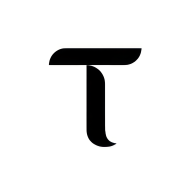


Prezzo di StellarXLM
Convertitore da XLM a EUR
Come ti senti oggi in merito a Stellar?
A proposito di Stellar (XLM)
A proposito di Stellar
Stellar (XLM) è una piattaforma blockchain decentralizzata progettata per elaborare transazioni in modo rapido, sicuro ed economico. Nata inizialmente come fork del protocollo Ripple, si è rapidamente trasformata in una realtà autonoma, con un progetto e degli obiettivi propri.
Lo sviluppo e la promozione del progetto sono affidati alla Stellar Development Foundation, con l’obiettivo di colmare il divario finanziario tra individui, imprese e istituzioni in tutto il mondo, in particolare laddove non arrivano i sistemi bancari convenzionali. Un passaggio notevole si è avuto nel gennaio 2023, quando la Stellar Development Foundation ha avanzato una richiesta di risarcimento di $13 milioni nei confronti di Genesis.
A differenza di numerose altre reti blockchain, Stellar non utilizza il mining ad alto consumo energetico. Al contrario, si avvale dello Stellar Consensus Protocol (SCP), un meccanismo di consenso federato, per l’autenticazione e la convalida delle transazioni. Questo algoritmo di consenso migliora l’efficienza e la sostenibilità di Stellar, allineandosi armonicamente con la sua strategia di fornitura di servizi finanziari accessibili ed efficienti per tutti.
Risorse utili
Whitepaper: https://www.stellar.org/papers/stellar-consensus-protocol
Sito web ufficiale: https://www.stellar.org/
Come funziona Stellar?
- Meccanismo di consenso: Stellar utilizza un sistema di accordo bizantino federato (un algoritmo che consente ai validatori di unirsi liberamente alla rete) chiamato Stellar Consensus Protocol (SCP). Questo metodo di consenso permette ai nodi (validatori di Stellar) di raggiungere un accordo sulla validità delle transazioni in modo decentralizzato. Il processo prevede una serie di turni di votazione per raggiungere il consenso, in modo da garantire la sicurezza e la rapidità delle transazioni.
- Ancore e asset emessi: l’architettura di Stellar consente di rappresentare vari asset sulla rete. Questi asset includono criptovalute, valute fiat, materie prime e persino token personalizzati. Per introdurre asset esterni sulla rete Stellar, alcune entità note come “ancore” fungono da intermediari di fiducia, facilitando il deposito e il prelievo di asset all’interno e all’esterno della rete e consentendo una perfetta integrazione tra il sistema finanziario tradizionale e la blockchain.
- Exchange decentralizzato (DEX): gli utenti possono scambiare i diversi asset direttamente sulla rete Stellar, grazie a funzionalità native della piattaforma. Questa funzione aumenta la liquidità e migliora l’efficienza della conversione degli asset, permettendo agli utenti di scambiare un asset con un altro in modo più conveniente, senza dover dipendere da piattaforme esterne.
- Smart contract e token personalizzati: sebbene gli smart contract di Stellar non siano complessi come quelli di Ethereum, offrono comunque funzionalità semplici e programmabili che possono essere utilizzate per eseguire determinate operazioni in modo automatico. In aggiunta, Stellar permette di creare token personalizzati, con cui gli utenti hanno l’opportunità di emettere i propri asset digitali sulla rete. I token personalizzati possono identificare qualsiasi cosa, dai punti fedeltà alle security (strumenti finanziari), ampliando così l’utilità della piattaforma e i suoi possibili casi d’uso.
Cos’è il token XLM?
La criptovaluta nativa della rete Stellar si chiama XLM (Stellar Lumens). Il suo ruolo all’interno dell’ecosistema è cruciale, poiché funge da valuta ponte al fine di facilitare gli scambi di asset e le transazioni transfrontaliere.
Di eseguito elenchiamo le funzioni principali di XLM.
- Commissioni di transazione: XLM viene utilizzato per pagare le commissioni di transazione sulla rete Stellar. Quando gli utenti eseguono operazioni come l’invio di pagamenti o il trading di asset, una piccola quantità di XLM viene bruciata (tolta dalla circolazione) a titolo di commissione per l’utilizzo della rete.
- Misura antispam: le commissioni di transazione nominali in XLM sono un meccanismo anti-spam per evitare che la rete venga sommersa da transazioni non necessarie o dannose.
- Bridge di liquidità: XLM funge da “ponte” di liquidità tra diversi asset della rete Stellar. Quando si scambiano due asset, XLM può essere l’intermediario, rendendo più fluide le conversioni.
- Incentivi per la community di Stellar: inizialmente, XLM è stato distribuito attraverso vari programmi e partnership in modo da far crescere la rete e creare una vivace community di utenti e sviluppatori.
Cosa determina il prezzo di Stellar?
Il prezzo di Stellar (XLM) oggi è influenzato da numerosi fattori interni ed esterni che interagiscono in modo complesso. Uno dei principali fattori interni riguarda l’utilità di Stellar nel facilitare le transazioni transfrontaliere a basso costo. La rete Stellar utilizza la sua valuta digitale nativa, Lumens (XLM), come bridge per scambi di valuta rapidi ed efficienti, influenzando così l’attuale valore di Stellar.
Grazie allo Stellar Consensus Protocol (SCP), la rete offre un’elevata velocità e basse commissioni di transazione, distinguendosi da altre criptovalute come Bitcoin ed Ethereum. A settembre 2023, la capitalizzazione di mercato di Stellar si aggirava intorno ai $3,3 miliardi. Ciò riflette l’ampiezza della sua utilità e adozione, fattori che a loro volta influiscono direttamente sul valore della moneta di Stellar e sul suo storico dei prezzi.
Anche i fattori esterni svolgono un ruolo significativo nel determinare il prezzo della criptovaluta Stellar. Il sentiment del mercato, spesso misurato attraverso l’analisi e i modelli di previsione del prezzo di Stellar, può indirizzare le fluttuazioni del prezzo di scambio di Stellar. Le collaborazioni con istituzioni finanziarie e altre organizzazioni influenzano in modo significativo le previsioni del prezzo di Stellar (XLM). Ad esempio, la partnership con il Ministero ucraino per la trasformazione digitale, volta alla creazione di una valuta digitale emessa da una banca centrale (CBDC), ha destato particolare scalpore nel settore.
Anche i trend macroeconomici che coinvolgono il mercato crypto, come le novità normative o le variazioni significative dei prezzi di altre criptovalute quali il Bitcoin, possono avere un impatto sul prezzo di Stellar in tempo reale. Gli investitori consultano spesso il grafico e lo storico dei prezzi di Stellar per prendere decisioni informate. Osservano da vicino l’andamento dei e i modelli di previsione dei prezzi di Stellar 2023 per valutarne le future performance.
Conclusione
Stellar è una piattaforma blockchain decentralizzata gestita da un protocollo di consenso che garantisce transazioni rapide e convenienti, senza l’impiego di energia per il mining. Con la sua attenzione all’inclusione finanziaria e a XLM come valuta ponte, Stellar ha del potenziale per trasformare il settore, promuovendo l’accessibilità e la liquidità a livello globale.
Va comunque ricordato che, come tutte le altre criptovalute, anche Stellar presenta dei rischi, motivo per cui è sempre consigliabile documentarsi e investire con cautela.
Rapporto di analisi IA su Stellar
Prezzo di Stellar di oggi in EUR
Storico dei prezzi di Stellar (EUR)
 Prezzo più basso
Prezzo più basso Prezzo più alto
Prezzo più alto 
Qual è il prezzo più alto di Stellar?
Qual è il prezzo più basso di Stellar?
Previsione del prezzo di Stellar
Quando è il momento giusto per acquistare XLM? Dovrei acquistare o vendere XLM ora?
Quale sarà il prezzo di XLM nel 2026?
Quale sarà il prezzo di XLM nel 2031?
FAQ
In cosa si differenzia Stellar da altre piattaforme blockchain come Bitcoin ed Ethereum?
Cosa sono i lumen stellari (XLM)?
Quanti Stellar Lumens (XLM) sono in circolazione?
I lumen stellari (XLM) possono essere puntati o estratti?
Il prezzo di Stellar Lumens (XLM) può raggiungere il valore di 1 dollaro?
Quanto è sicura la rete Stellar?
Qual è il prezzo attuale di Stellar?
Qual è il volume di trading di 24 ore di Stellar?
Qual è il massimo storico di Stellar?
Posso acquistare Stellar su Bitget?
Posso ottenere un guadagno costante investendo in Stellar?
Dove posso acquistare Stellar con la commissione più bassa?
Notizie su Stellar
Aggiornamenti su Stellar
Mercato Stellar
Saldo di Stellar per concentrazione
Indirizzi Stellar per durata dell'holding

Prezzi di Stellar globali
- 1
- 2
- 3
- 4
- 5
Come acquistare Stellar(XLM)

Crea il Tuo Conto Bitget Gratuito

Verifica il Tuo Conto

Converti Stellar in XLM
Fai trading sui futures perpetui XLM
Dopo essersi registrati con successo su Bitget e aver acquistato i token USDT o XLM, puoi iniziare a fare trading sui derivati, compresi i futures XLM e il trading con margine, per aumentare i tuoi rendimenti.
Il prezzo attuale di XLM è €0.2195, con una variazione di prezzo in 24 ore di +4.41%. I trader possono trarre profitto sia andando long che short sui futures XLM.
Partecipa al copy trading di XLM seguendo i trader d’élite.
Nuovi listing su Bitget
Acquista di più
Dove posso acquistare Stellar (XLM)?
Sezione video: verifica rapida e accesso rapido al trading

Convertitore da XLM a EUR
Risorse di XLM
Tag:
Valutazioni di Stellar
Bitget Insights





Asset correlati
Informazioni aggiuntive su Stellar
Panoramica della moneta
In relazione alle monete
In relazione al trading
Aggiornamenti delle monete
























.png)






Dati social di Stellar
Nelle ultime 24 ore, il punteggio riguardo l’opinione generale sui social media per Stellar è stato 3.5, e l’opinione generale sui social media verso l'andamento dei prezzi di Stellar è stato Rialzista. Il punteggio complessivo di Stellar sui social media è stato di 19,089, collocandosi al 165° posto tra tutte le criptovalute.
Secondo LunarCrush, nelle ultime 24 ore le criptovalute sono state menzionate sui social media per un totale di 1,058,120 volte, con Stellar che è stato menzionato con un rapporto di frequenza pari al 0.03%, posizionandosi al 93° posto tra tutte le criptovalute.
Nelle ultime 24 ore, ci sono stati in totale 894 utenti unici che hanno discusso di Stellar, con un totale di 309 menzioni riguardo Stellar. Tuttavia, rispetto alle 24 ore precedenti, il numero di utenti unici ha avuto un/una Incremento del 8%, inoltre il numero totale di menzioni ha avuto un/una diminuzione del 31%.
Su X, c'è stato un totale di 13 tweet che hanno menzionato Stellar nelle ultime 24 ore. Tra questi, il 38% è rialzista su Stellar, il 0% è ribassista su Stellar ed il 62% è neutrale su Stellar.
Su Reddit, ci sono stati 3 post che hanno menzionato Stellar nelle ultime 24 ore. Rispetto al precedente periodo di 24 ore, il numero di menzioni ha avuto un/una diminuzione del 0%.
Panoramica su tutti i social
3.5